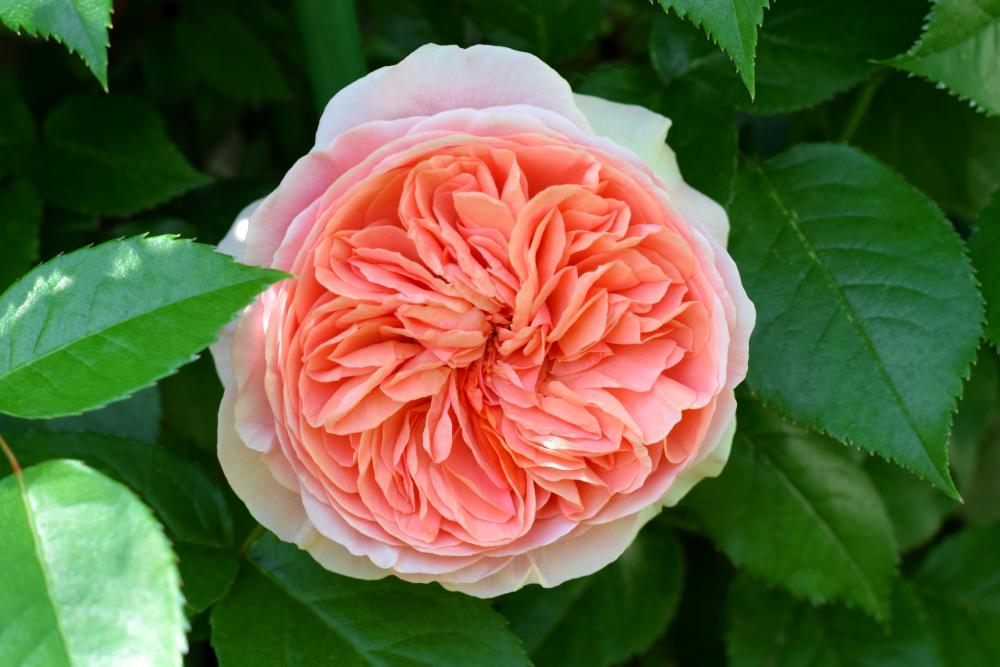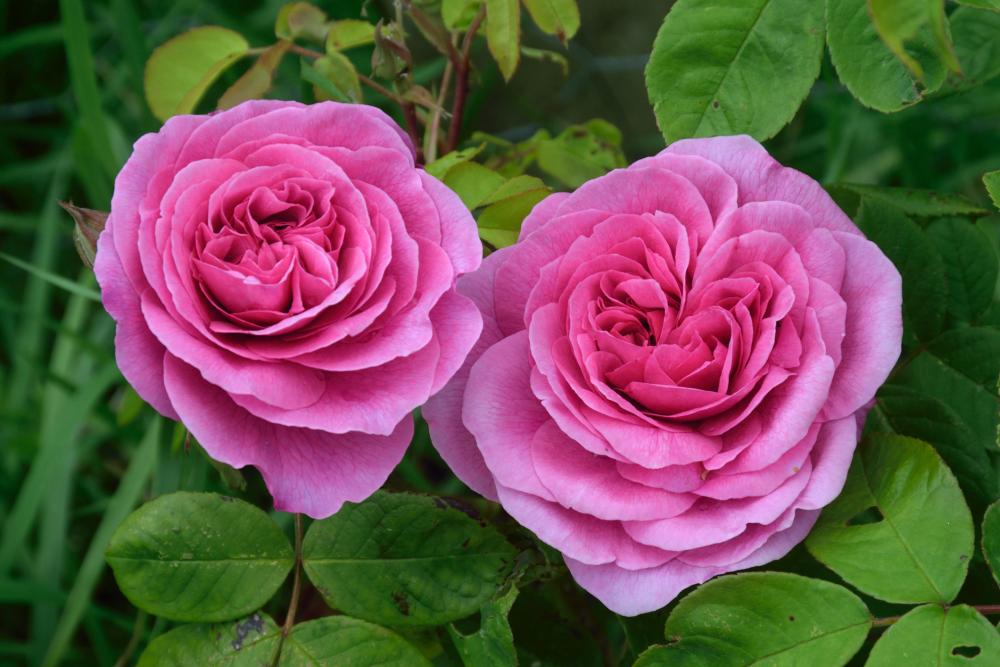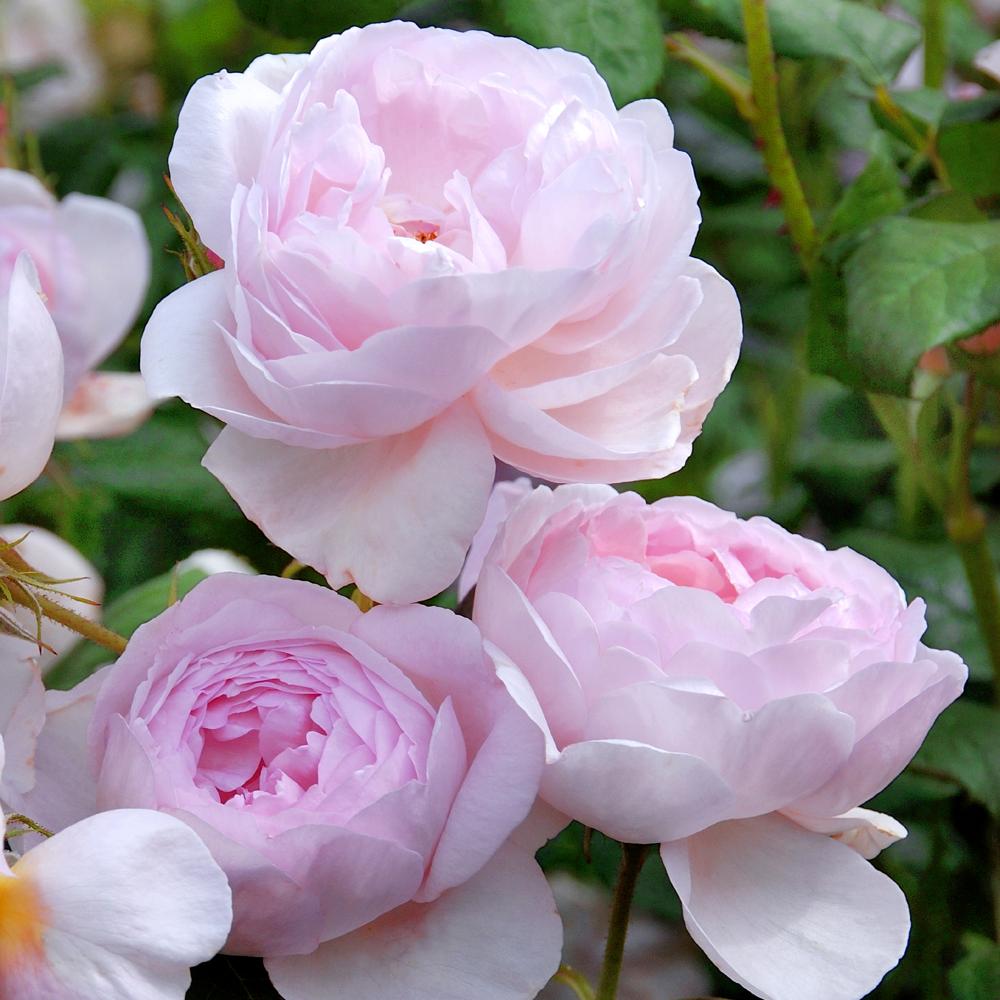Best 8 Fragrant Rose Varieties And How To Care For Them
There’s a reason poets wrote love poems about roses more than any other flowers. Besides their intricate petals and symmetrical shapes, the blooms are as fragrant as any other flower species if not more. But not all roses are fragrant. Some have a stronger scent than others while some varieties are totally odorless.
You can imagine the disappointment when you buy rose seeds online only to discover a few months later that the blooms have no fragrance. So to avoid wasting your time, we put together a list of the best fragrant rose varieties. Hopefully, you’ll find here one or more rose varieties that please your senses and become a permanent fixture of your rose garden.
Rose Variety – Country Parson
As we all know, the work of nature leaves room for improvement. So no matter how beautiful the natural rose species are, there’s always a cultivar that beats it in terms of fragrance, shape, richness of colors, or bloom longevity. That’s where the Country Parson comes in. A yellow bloom that has a medium to strong fruity fragrance and a compact bush. It’s ideal for your rose garden or as a potted plant that fills up a corner with its colors and scents.
Another feature that makes this cultivar the top choice of rose lovers everywhere is that it tends to flower more than once during the year. In fact, the more roses you pick, the more the Country Parson keeps producing. Repeat flowering makes it ideal for your garden.
The cultivar has a good fruity scent that doesn’t overwhelm the senses even when you’re in close proximity to the roses. The medium-size shrub reaches its full size within the first three years of its life. It grows to about 4 feet high and the same in width. Cultivated from Scottish rose varieties, the bush fits well in mixed borders, rose hedges and borders, and areas with partial shade. It grows well in all soil types and requires medium watering during the growing season and less water in the fall and winter.
Rose Variety – Scepter’d Isle
Nothing beats an English rose. In terms of beauty, fragrance, bloom time, and endurance, an English rose always proves to be the real deal. If you want to plant an English rose variety, you couldn’t go wrong with the Scepter’d Isle. This cultivar which was crossbred on English soil and offers stunning flowers and exquisite fragrance.
We start with the bloom since they’re the most distinguishing feature of this cultivar. They come in one color, pink, although the outside of the petals is pale pink compared to the rich and deep colors of the inside. The middle of the rose is yellow and the whole flower has a cup shape. They have a strong fragrance of myrrh. The bush has a repeated flowering habit and will produce flowers throughout the spring and summer.
On average the cultivar grows to a little over 4 feet in height and width and has medium-size blooms. It grows in all soil types and can tolerate both full sun and partial shade. This makes this bush ideal for different settings and purposes. You can use it in rose borders, mixed borders, as potted plants, and in shady areas. The strong scent of the rose also attracts pollinators, especially bees to your garden.
Rose Variety – Emily Bronte
Another cultivar that comes straight from the illustrious English rose family, Emily Bronte takes you back to a romantic age where life was simple and love filled the air. A multi-color rose, Emily Bronte is a dedication to the famous English novelist. The rose is a combination of apricot, cream, and soft pink. It has large blooms with a fragrance that is closer to tea than anything else.
The bush grows to about 4 feet tall and 3.5 feet wide. As a repeat flowering cultivar, you can grow this compact bush in a pot, a rose hedge, a rose border, or a mixed border. However, this cultivar has less tolerance to shade than other roses on this list. So you’ll need to find it a nice sunny spot in your garden where it gets between 6 to 8 hours of sun a day during the growing season.
This cultivar also has a healthy and upright growth and develops a robust bush within the first few years. It requires regular pruning in the fall of every year just to keep it in good shape. The leaves are another feature that makes this cultivar stand out. They’re glossy green with reddish hints around the edges.
Rose Variety – Gertrude Jekyll
This rose variety has lovely pinkish blooms that are as dramatic and intricate as the name implies. If you look for a more English name, you couldn’t find something matching the complex undertones of Gertrude Jekyll. Does it imply that the rose has a sinister hidden side?
Far from it. The rose was named after a famous English writer. Besides, this cultivar with its bright pink blooms and Old Rose fragrance is the very embodiment of innocence, joy, and the good life.
If there’s one word to describe this rose bush, it’s vigorous. It has vigorous growth, large blooms, strong fragrance, and repeat flowering as well. It’s the kind of cultivar that thrives in just about any design purpose you use it for.
Since it grows to about 3.5 feet tall and 3 feet wide, the bush thrives as a potted plant as well as a border bush. Plant it in mixed borders or rose borders to give your landscape an original look. It also thrives in full to partial sun. With a low tolerance for shade, you shouldn’t plant it in the shadow of a large tree or in eastern- to northern-facing areas. It won’t complain about the soil as long as it’s well-drained and rich. Mix in plenty of organic materials and apply phosphorus-based fertilizers for richer bloom colors.
Rose Variety – Golden Celebration
So far we have seen cultivars with names that were more of a miss and tended to stray from their true purpose. But with the Golden Celebration, you get a rose cultivar that lives up to its name. And although this cultivar is best known for its strong fragrance, the blooms still display an exquisite beauty that is hard to overlook.
As a medium bush, the Golden Celebration grows as high as much as wide and ends up with a perfectly shaped bush that averages 4 feet. But it’s the blooms that steal the show here and what large blooms they are. The color is a uniform rich yellow that deepens toward the center of the rose. As for the famous fragrance, it has strong tea notes with hints of strawberry and red wine.
And when you have a well-behaved bush like that that stays in shape with minimum pruning, you can practically grow it anywhere. Some landscaping design ideas include planting the Golden Celebration in rose hedges, rose hips, mixed borders, pots, and containers, and as an excellent way to attract pollinators. Bees in particular love this rose and will fly for miles seeking its strong scent and sweet nectar. As long as you plant it in a sunny spot where it gets the full noon and afternoon sun, you will have plenty of blooms year after year.
Rose Variety – Boscobel
The first time you see the blooms of the Boscobel, you will stop in your tracks and approach it for a better look. I mean, forget about the medium-strong fragrance of myrrh, the shape and color of this rose deserve a pause.
The round rose opens with the usual rose petals that almost maternally surround the smaller petals inside. Those petals form an almost different rosette inside the rose. They have a way of wrapping themselves around each other to create a stunning image that will undoubtedly linger on your mind for the rest of the day.
As a medium bush, the Boscobel grows to a little over 3 feet high and the same in width within the first three years of its life. So it’s not the fastest-growing rose bush you can plant, but it will look right at home within a rose border as much as in a container.
And let’s not overlook the fragrance. While it’s not the strongest fragrance in the rose garden, it has subtle hints of different fruits. Most notably, you’ll get notes of almond, pear, and hawthorn along with the dominant myrrh scents. This cultivar needs full sunlight during the spring and summer.
Rose Variety – Royal Jubilee
The Royal Jubilee is a departure from your typical English rose family. It’s still a fragrant rose and grows on a rose bush. But the chalice-like blooms don’t look much like the typical rose. They look like they haven’t fully opened even when they’re in full bloom. The petals jealously protect the center of the rose as if from intruders. But with its medium strong fruity fragrance and deep pink colors, the Royal Jubilee deserves a place on this list.
The bush is of an above-average size as well. It towers over 4.5 feet high and is the same in width. The roses grow on long and thin stems that look their best in a vase. You can cut the flowers and create many floral arrangements with the Royal Jubilee as the centerpiece.
And because of its large size, this bush is either for mixed hedges or rose borders. You could try to grow it as a potted plant, but I doubt you’ll find a container large enough for this tall bush. It has a low tolerance for shade and partial shade as it requires at least 8 hours of sunlight every day for those beautiful flowers to open and bloom.
Rose Variety – Charles Darwin
When cultivating your own hybrid rose variety, who better to name it after than the father of evolution himself. But besides the name, there’s nothing about this yellow rose that reminds you even remotely of the bearded scientist. Not even the dense petals that pile over each other and create a bohemian atmosphere. Nor the strong tea fragrance of the rose that is a throwback to life in the English countryside as it was depicted in old movies from across the pond.
Not that having a rose bush with blooms as scraggy as the white flowing beard of Charles Darwin is anything to look down upon. But the point is, this cultivar is nothing but exquisite and elegant in every way. Take for example the way the rose bush tends to grow horizontally more than vertically. It averages about 3.5 feet high and 4.5 feet wide. That means it tends to spread and needs more space than your average rose bush.
It’s also a repeat flowering bush that keeps producing more rose the more you cut its blooms. Rose deadheading is an art with more practical purposes than aesthetic values. But there’s more to the blooms of Charles Darwin than meets the eye. The fully round flowers have the shape of a cup and open their yellow petals that display different gradients of the yellow color. Pale around the edges, the color deepens as you move your eyes to the center of the rose. There the color is almost mustard.




